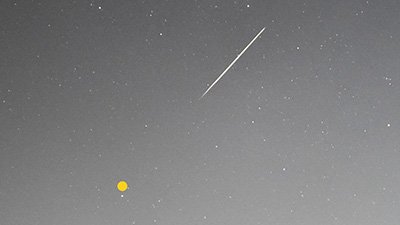
The James Webb Space Telescope Turns Its Attention to Exoplanets
And the News Isn’t Good for Finding Earthlike Planets
With all the interest in the images of very distant galaxies that the James Webb Space Telescope (JWST) has taken over the past year, it is easy to lose sight of the fact that this is just one of the two key objectives of the JWST. The other mission of the JWST is to study the atmospheric composition of exoplanets, i.e., planets orbiting other stars. In a recent study, one of the first targets of this second program was HD 149026 b (aka Smertrios), the lone known planet orbiting the star HD 149026 in the constellation Hercules. HD 149026 is slightly hotter and larger than the sun. Smertrios is more than one hundred times the mass of the earth, so it is believed to be similar to the gas giant planets of our solar system, like Jupiter. Smertrios orbits closely to HD 149026, taking less than three days to complete one orbit, so Smertrios must be very hot. Exoplanets like this are called hot Jupiters.
Using our solar system as a template, astronomers expect that large exoplanets will have similar atmospheres to the gas giant planets we are so familiar with. So, what did this study find? The gas giant planets of our solar system have atmospheres dominated by the lighter gases, hydrogen and helium. While heavier elements, such as oxygen, nitrogen, and carbon are present in the atmospheres of the gas giant planets, they are in low abundance. Not so with Smertrios, which has far more carbon and oxygen than the gas giants in our solar system.
Even worse, the carbon-to-oxygen ratio is much higher than in the gas giants of our solar system. Abundant carbon may seem favorable for life, but as carbon abundance increases, it tends to bond with oxygen, leaving less oxygen available to form water. If these trends continue with other exoplanets, the high expectation of finding evidence of life elsewhere in the universe may dim.
If these trends continue with other exoplanets, the high expectation of finding evidence of life elsewhere in the universe may dim.
Before exoplanets began to be discovered three decades ago, it was expected that exoplanets would be common in the universe, which apparently is the case. However, planetary systems were expected to mirror what we see in our solar system, with the small (rocky) planets orbiting close to their stars and massive (gas giant) planets orbiting far from their stars. However, astronomers have found many examples of gas giants close to their stars (such as Smertrios) that challenge naturalistic origins. Furthermore, earthlike planets were expected to be common in the universe, but thus far they continue to elude astronomers.
Meanwhile, another research project also involving the JWST looked for evidence of an atmosphere around the exoplanet TRAPPIST-1 b. The star <TRAPPIST-1 has seven known planets, at least three of which are in the star’s habitable zone. The planet that orbits closest to the star, TRAPPIST-1 b, is not in the star’s habitable zone. However, it is slightly larger and more massive than the earth, with a density about the same as earth’s, so it was thought to have an atmosphere. The JWST’s Mid-Infrared Instrument (MIRI) measured the temperature of TRAPPIST-1 b to be 230 degrees Celsius (450 degrees Fahrenheit). That is far too high for an atmosphere, so MIRI probably measured the rocky surface of the planet rather than its atmosphere. Why does this planet that appears massive enough to have an atmosphere not have one? As I have pointed out before, red dwarf stars such as TRAPPIST-1 tend to have powerful flares that, given the proximity of their orbiting earth-size planets, probably have stripped those planets of their atmospheres. This does not bode well for the three earth-size planets that orbit slightly farther out from TRAPPIST-1 in its habitable zone—they likely lack atmospheres as well. With no atmosphere, there can be no liquid water present, and both are essential for life.
Since Answers in Genesis is committed to special creation as described in Genesis 1, we do not expect life to exist elsewhere in the universe, so we are not surprised by these results. Nor are we surprised that exoplanets continue to defy naturalistic expectations based upon the earth and our solar system being typical of planets elsewhere in the universe. God created the earth and its environment to be suited for mankind’s stewardship and benefit.

Answers in Genesis is an apologetics ministry, dedicated to helping Christians defend their faith and proclaim the good news of Jesus Christ.
- Customer Service 800.778.3390
- © 2024 Answers in Genesis



